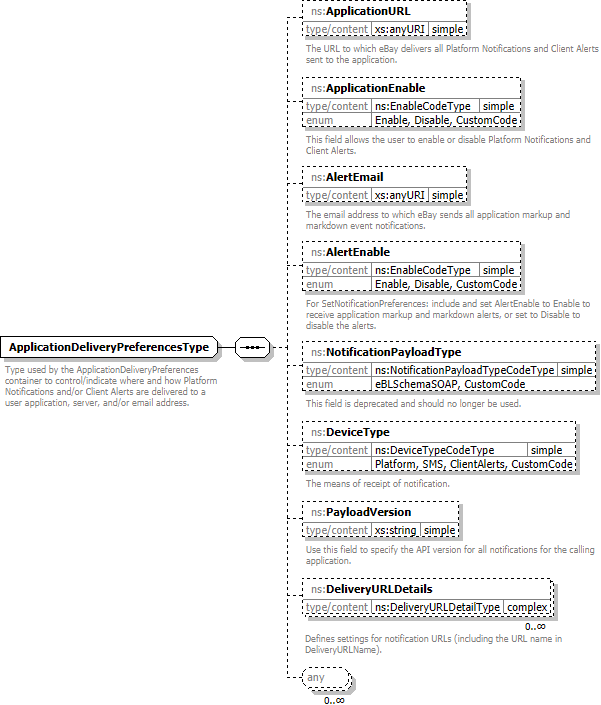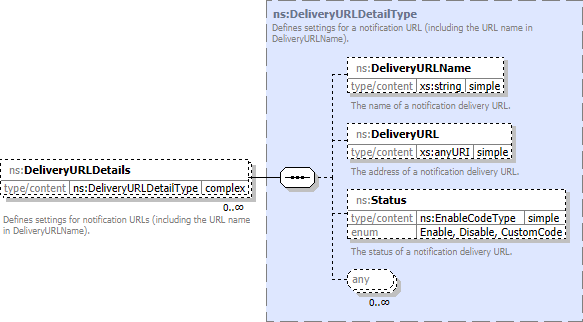
|
eBay Trading API |
|||||||||||||
Namespace: |
|
Content: |
|
Defined: |
|
Includes: |
|
Used: |
at 2 locations |

XML Representation Summary |
|||
<...> |
|||
|
|||
</...> |
|||
|
<xs:sequence>
<xs:element minOccurs="0" name="ApplicationURL" type="xs:anyURI"/>
</xs:sequence>
<!-- this element is deprecated -->
<xs:element minOccurs="0" name="NotificationPayloadType" type="ns:NotificationPayloadTypeCodeType"/>
<!-- end of deprecated element -->
<xs:element maxOccurs="unbounded" minOccurs="0" name="DeliveryURLDetails" type="ns:DeliveryURLDetailType"/>
<xs:any maxOccurs="unbounded" minOccurs="0" processContents="lax"/>
</xs:complexType>
|
Type: |
xs:anyURI, predefined, simple content
|
mailto://youremailaddress@yoursite.com". Note that the AlertEnable field must be set to Enable for alert emails to be sent.
|
||||||||
Type: |
ns:EnableCodeType, simple content
|
Enable to receive application markup and markdown alerts, or set to Disable to
disable the alerts. If not included, the AlertEnable defaults to
its current value.
|
||||||||
Type: |
ns:EnableCodeType, simple content
|
|
||||||||
Enumeration: |
|
Type: |
xs:anyURI, predefined, simple content
|
https://" and must be well formed.
|
||||||||
Type: |
ns:DeliveryURLDetailType, complex content
|

|
||||||||
|
<xs:element maxOccurs="unbounded" minOccurs="0" name="DeliveryURLDetails" type="ns:DeliveryURLDetailType"/>
|
Type: |
ns:DeviceTypeCodeType, simple content
|
|
||||||||
Enumeration: |
|
Type: |
ns:NotificationPayloadTypeCodeType, simple content
|
|
||||||||
Enumeration: |
|
|
<xs:element minOccurs="0" name="NotificationPayloadType" type="ns:NotificationPayloadTypeCodeType"/>
|
Type: |
xs:string, predefined, simple content
|
|
||||||||
|
<xs:any maxOccurs="unbounded" minOccurs="0" processContents="lax"/>
|
|
eBay Trading API |
|||||||||||||
WSDL documentation generated with FlexDoc/XML 1.13 using FlexDoc/XML WSDLDoc 1.2.5 template set. All XSD diagrams generated by FlexDoc/XML DiagramKit. |